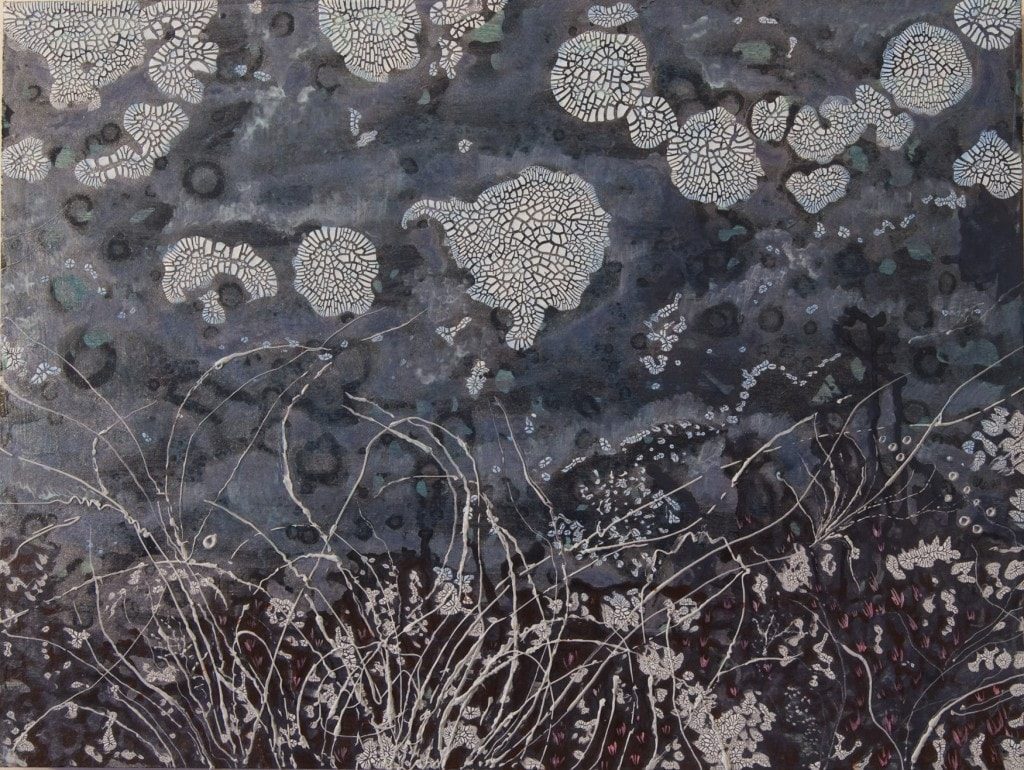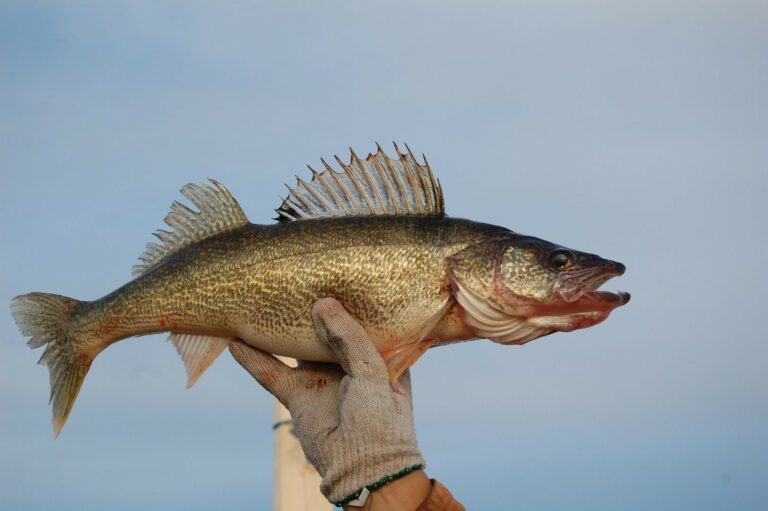An afternoon with Tracey Breitbach’s paintings is like a walk in the park…or in her case, the taiga. As a child she grew up exploring the rocky hills around Yellowknife with an attention to the “small, delicate life” underfoot. After studying at the Emily Carr Institute of Art in Vancouver, and receiving an interdisciplinary fine arts degree from Concordia University, Breitbach settled back in her home town, worked as director of Folk on the Rocks for seven years, then began painting again. The large, textured acrylic depictions of lichens and sub-Arctic terrain she completed this past year were featured at Morph, an exhibit at the YK Artist Run Community Centre in August, which is where caught up with her.
Why do you paint lichen?
TRACEY BREITBACH: (Laughs). Well growing up in Yellowknife, I’ve always been very fascinated with the shield country, with the rocky terrain that surrounds us. But I think with the lichens I’ve come full circle. Back when I started painting in Emily Carr it was my subject and it’s become my subject again. I guess because the lichens to me represent the patterns that I see all through life from a small scale to a large scale, repeated patterns that I find. I like playing with that.
When I see the lichens I think ‘oh, that’s almost an aerial perspective,’ it could be a personal map and I like exploring those up close places and those faraway places. I don’t analyse it too much, but as an artist I like to play with the idea of taking something that’s very miniscule or small, with details that are not so noticed, and blowing them up to a human scale.
EDGE YK: Why is taking small to large so appealing to you?
TB: I’m very influenced by abstract expressionism. I love the idea of painting really large so a painting is not something that exists on a wall, but something you approach, and it kind of becomes part of your space. I like people to engage with a painting. This could be influenced by my art background, I did dabble in theatre and design. I used to make these small little slides and project them and I was always fascinated
with the patterns that exist on a greater scale. For example, I was with a theatre group and I was responsible for the projections. I’d make all these handmade slides and I’d use things like fish skins, I know that sounds kind of gross, but I liked how when dried and blown up it was very reminiscent of the granite and the landscape. So I play with those kinds of ideas, I’m fascinated with the patterns that exist on so many planes and different levels.

Grey Matter | acrylic on canvas 12”X16”
EDGE YK: How do people react to these patterns?
TB: I get people who say it’s a dreamscape or it reminds them of choral, and then I feel like I’m moving in the right direction because I am playing with those different parallels. When I was being critiqued in school my instructor, who was very French, he was from Europe, couldn’t make any sense of it. He’d say, ‘What is this, blue cheese? Or mould, or elephant skin?’ So I got a lot of strange comments.
EDGE YK: Do you have a painting routine, because you’re busy with children now too?
TB: Night owl. I definitely started with my first born when she was napping, I started getting seriously into painting again. But nighttime is my time. If I have to function on four or six hours of sleep then I will. What I do lately is I love starting a painting. Because there’s certain steps to my painting, things have to cure – I use gels and moulding paste, crackle mediums, glass beads and stuff that’s been worked in the paints – and I have to wait to see the results. I often work on three or four paintings at once.
EDGE YK: What can you get from a traditional painting that you can’t get from a digital one?
TB: A painting, depending on the light of the day, changes. And I play with a lot of metallic and interference, iridescent colours, so the painting I’m looking at right now with my caribou and the snowscape, depending on the type of day it looks different. The colours come out, or the pearlescent.
And it’s very hard to photograph that digitally or reproduce that. I’ve tried a photograph and it doesn’t look the same, it’ll be flat. A painting can morph depending on the time of day, maybe that’s part of that interaction I’ve been talking about, a bit of the theatre, that live action, to interact with the painting on a human scale.
To see more of Tracey Breitbach’s paintings visit her website: tracey.breitbach.ca

After the fires have all died | acrylic on canvas 36”X30






